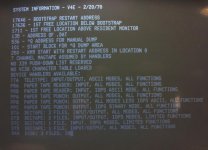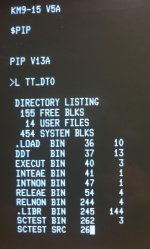commodorejohn
Veteran Member
That's Superior for ya.
Have you considered looking at PIP10 in OS/8, which already exists, was designed for 18-bit DECtapes, and was extensively tested back in the day?
Either make use of it directly, if the file systems are compatible, or use it as a source for your code. That's what I did when I needed to dump PDP-9 DECtapes a few years ago. Copied PDP10.PA, modified things around, and dumped blocks from DECtape.

We connected an ASR33 Teletype to the console port on the PDP-9 today. Much more fun than the VT220.
Sounds interesting, look forward to update on the PDP-9. What size space do you currently have and how big is the new space? Look forward to some pictures!!!:D

You may have noticed that one of my DECTapes contains Spacewar! for PDP-9. No source code though.
